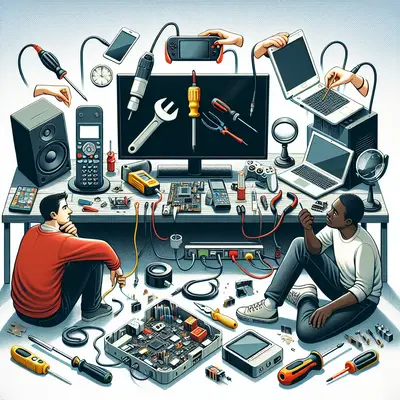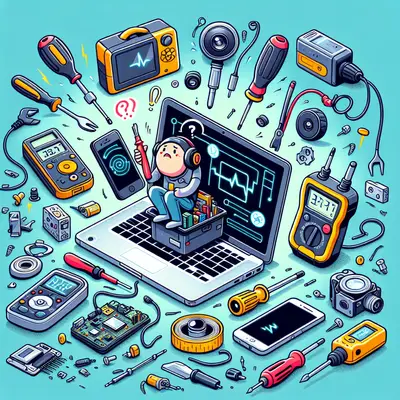Our ever-changing world of technology continues to innovate and evolve, but sometimes, our favorite gadgets run into problems. Rather than replacing them, it's often more economical (and more satisfying) to fix them yourself. This article will guide you through five revolutionary techniques to resurrect your electronics in 2025.
Technique 1: The Rice Trick for Moisture Damage
We've all been there: a moment of inattention, and your precious gadget takes an unexpected dip. Fortunately, there's a simple solution. Turn off your device immediately to prevent electrical damage. Dry it off as much as you can, then bury it in a bowl of uncooked rice. The rice will absorb the moisture over time. Leave it for 48 hours, then try powering it back on.
Technique 2: Toothpaste for Screen Scratches
Minor scratches on your device screen can be incredibly annoying. A surprising fix involves something you likely already have in your bathroom: toothpaste. Apply a tiny amount of toothpaste onto a soft cloth and rub it gently onto the scratch in a circular motion. Wipe off the residue with a clean, slightly damp cloth. This trick works best with non-gel toothpaste and minor scratches.
Technique 3: The Freezer Method for Dead Batteries
If your device's battery is draining faster than usual, it might be time for a reset. One way to do this is by using the freezer. First, ensure your device is powered off. Remove the battery and place it in a sealed plastic bag. Put the bag in the freezer for about 12 hours, then reinsert the battery and power on the device. This method can help reset the battery and improve its performance.
Technique 4: Compressed Air for Dust Buildup
Over time, dust accumulates in the nooks and crannies of our devices, which can cause them to overheat and slow down. Using a can of compressed air, you can easily remove this dust. Be sure to keep the can upright while using it to prevent the liquid propellant from damaging your electronics.
Technique 5: Baking Soda and Water for Sticky Keys
If your keyboard keys are sticking, a solution of baking soda and water could help. Mix one part baking soda with two parts water and stir until it forms a paste. Apply the paste to the affected keys with a toothbrush or cotton swab, then wipe away the residue with a damp cloth. This should help remove any sticky residue causing the keys to stick.
Conclusion
With these practical and revolutionary techniques, you can extend the life of your electronics and keep them running smoothly. Remember, always take safety precautions when dealing with electronics, and if a problem seems too big to handle, don't hesitate to consult a professional. Happy repairing!



